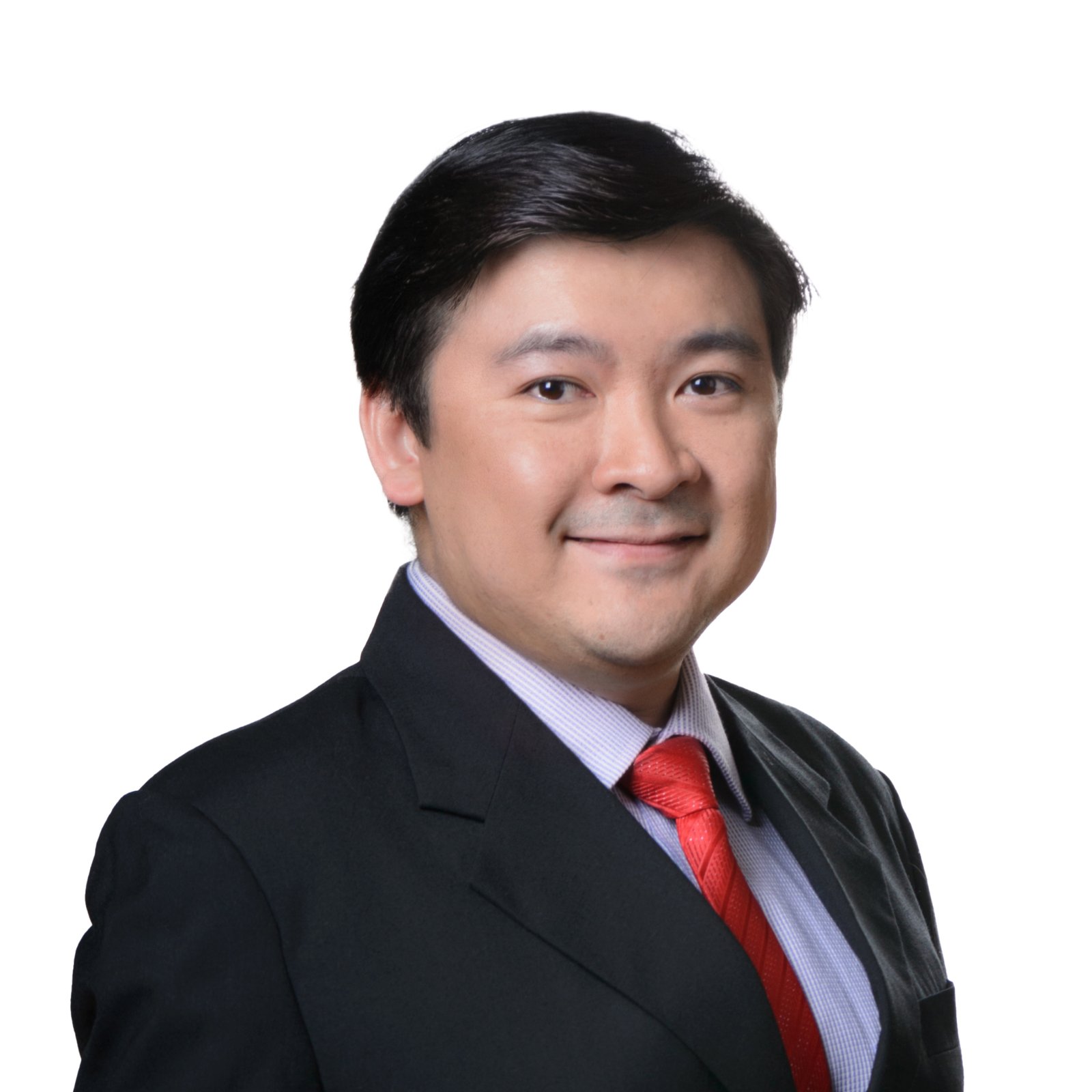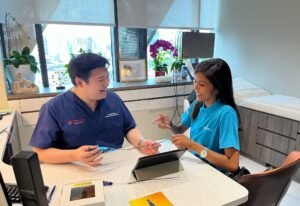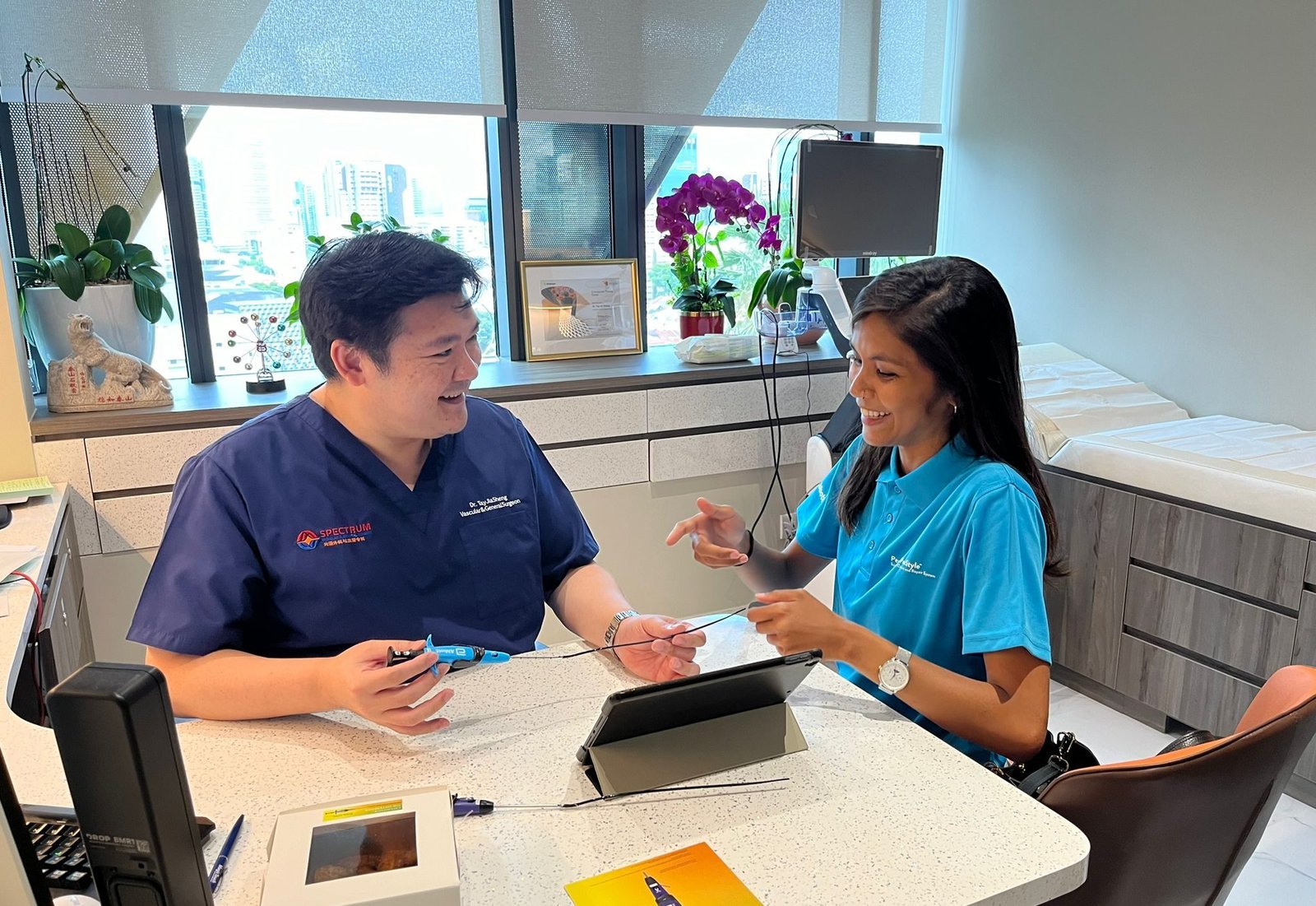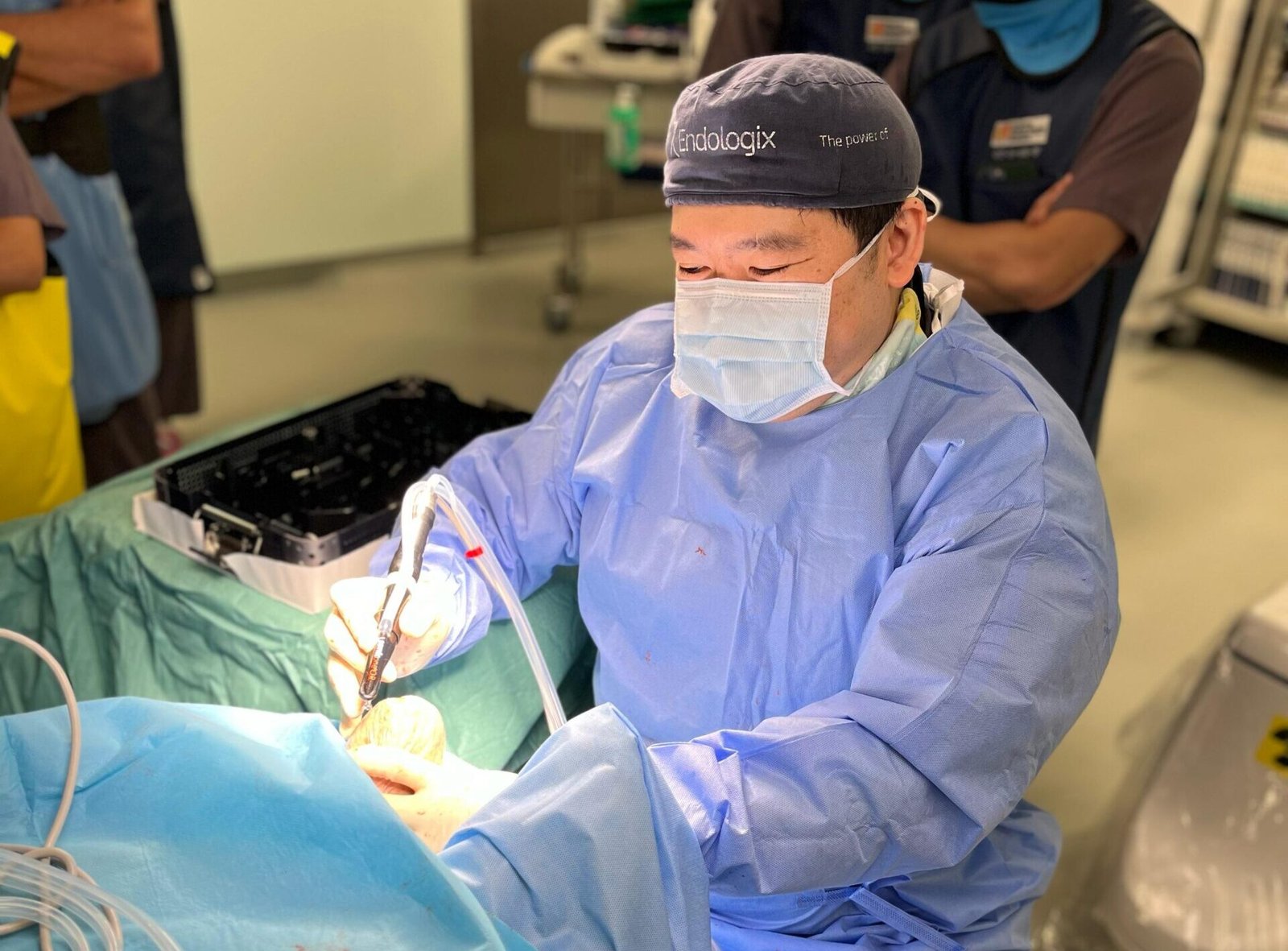
Chronic wounds extend beyond just physical problems, often causing significant emotional and financial stress for patients and their families.
These wounds may persist for weeks to months, resisting standard treatments and progressing to severe health complications.
Left untreated, they can result in infection, tissue damage, reduced mobility, and in severe cases, even amputation.
This page outlines everything you need to know about chronic wound treatment in Singapore—from recognising symptoms and causes to exploring treatment options and long-term management.


Dr Tay Jia Sheng is a distinguished vascular surgeon in Singapore, specialising in minimally invasive vascular, endovascular and endovenous procedures. He treats a broad range of conditions including varicose veins, deep vein thrombosis, peripheral arterial disease, diabetic foot ulcers and aortic aneurysms.
As a founding vascular surgeon at Sengkang General Hospital, Dr Tay led one of Singapore’s busiest vascular units with strong outcomes and low complication rates. He is among the few local surgeons skilled in advanced techniques such as minimally invasive vein harvesting and complex endovascular aneurysm repairs.
Outside the operating theatre, he has taught at Yong Loo Lin, Duke-NUS and Lee Kong Chian medical schools. Recognised with awards such as the SingHealth Quality Service Award and COVID-19 Resilience Medal, he now practises at Spectrum Vascular & General Surgery, offering patient-centred care with a focus on minimally invasive treatment.


Dr Tay Jia Sheng is a distinguished vascular surgeon in Singapore, specialising in minimally invasive vascular, endovascular and endovenous procedures. He treats a broad range of conditions including varicose veins, deep vein thrombosis, peripheral arterial disease, diabetic foot ulcers and aortic aneurysms.
As a founding vascular surgeon at Sengkang General Hospital, Dr Tay led one of Singapore’s busiest vascular units with strong outcomes and low complication rates. He is among the few local surgeons skilled in advanced techniques such as minimally invasive vein harvesting and complex endovascular aneurysm repairs.
Outside the operating theatre, he has taught at Yong Loo Lin, Duke-NUS and Lee Kong Chian medical schools. Recognised with awards such as the SingHealth Quality Service Award and COVID-19 Resilience Medal, he now practises at Spectrum Vascular & General Surgery, offering patient-centred care with a focus on minimally invasive treatment.
Chronic wounds are those that fail to progress through the normal stages of healing within a reasonable timeframe. Typically, if a wound remains open beyond three months, it is regarded as chronic.
Unlike acute wounds that close naturally, chronic wounds persist due to factors such as poor circulation (essential for oxygen and nutrient supply), infection or other underlying medical conditions.
Healing can also be affected by conditions like diabetes, venous or arterial disease and age-related metabolic changes. Left untreated, these wounds may never fully close and even cause further complications.


Chronic wounds are those that fail to progress through the normal stages of healing within a reasonable timeframe. Typically, if a wound remains open beyond three months, it is regarded as chronic.
Unlike acute wounds that close naturally, chronic wounds persist due to factors such as poor circulation (essential for oxygen and nutrient supply), infection or other underlying medical conditions.
Healing can also be affected by conditions like diabetes, venous or arterial disease and age-related metabolic changes. Left untreated, these wounds may never fully close and even cause further complications.
Chronic wounds may present differently depending on their cause, but they share a common feature: delayed or prolonged healing
Key signs to look out for include:
If you notice any of these symptoms, seek medical assessment early to avoid complications that may be irreversible.
Chronic wounds can develop for different reasons, each with distinct features and challenges:
Chronic wounds can affect anyone, but certain groups face a higher risk due to medical conditions or lifestyle factors:
If you fall into one of these higher-risk groups, early medical assessment can make a crucial difference in preventing complications.
Diagnosing a chronic wound goes beyond looking at the surface:
A thorough assessment is needed to understand why the wound is not healing and to guide the right treatment plan.
Your doctor will begin with a detailed medical history and physical examination, assessing the wound’s size, depth, location and duration.
They will also look for signs of infection, poor circulation or underlying conditions that may be slowing recovery.
To gain a clearer picture, further tests may be recommended:
By combining physical examination with these investigations, your doctor can determine both the type of wound and the underlying causes, ensuring treatment is tailored for effective healing.

Diagnosing a chronic wound goes beyond looking at the surface:
A thorough assessment is needed to understand why the wound is not healing and to guide the right treatment plan.
Your doctor will begin with a detailed medical history and physical examination, assessing the wound’s size, depth, location and duration.
They will also look for signs of infection, poor circulation or underlying conditions that may be slowing recovery.
To gain a clearer picture, further tests may be recommended:
By combining physical examination with these investigations, your doctor can determine both the type of wound and the underlying causes, ensuring treatment is tailored for effective healing.

Effective treatment of chronic wounds requires more than just surface care:
It involves creating the right environment for healing while addressing the underlying cause. Depending on your condition, treatment may include a combination of non-surgical measures and advanced interventions.
Non-surgical treatments focus on supporting the body’s natural healing process and reducing barriers to recovery. These include:
Specialised dressings such as foam, hydrocolloid or alginate help maintain moisture, protect against infection and promote tissue repair.
Removing dead or infected tissue encourages healthy growth and improves the effectiveness of other treatments.
For venous ulcers, compression bandages or stockings enhance blood flow and reduce swelling.
Also called vacuum-assisted therapy, NPWT applies controlled suction to remove excess fluid and stimulate tissue growth.
HBOT delivers oxygen in a pressurised chamber, boosting oxygen levels in the wound to accelerate healing, particularly in diabetic foot ulcers.
Antibiotics may be used to treat infection, while medications can also help manage underlying conditions such as diabetes or circulatory disorders.
For complex or non-healing wounds, surgical approaches may be required:
Used in venous ulcers to seal or correct faulty veins and improve circulation.
Angioplasty or bypass surgery may be necessary to restore the blood supply in arterial ulcers.
Transplanting healthy skin to cover and close wounds that fail to heal naturally.
At Spectrum Vascular, we tailor every treatment plan to the individual, combining advanced techniques with supportive care to achieve faster healing, relieve symptoms and prevent recurrence.
Chronic wounds often persist because of underlying causes like vascular disease or diabetes that go unrecognised. While basic dressings or home remedies may help with minor injuries, they are not enough to heal chronic wounds.
At our clinic, we provide advanced wound care while addressing underlying vascular or medical conditions. This comprehensive approach ensures that both the wound and its root cause are treated, giving you the best chance for lasting healing.
For enquiries, consultation or second opinions, please complete the form below or call us at +65 8874 0371
Our team will get back to you shortly to assist with your request.

A wound is considered chronic if it has not healed after about 12 weeks. Other signs include slow or stalled healing, recurring infections, skin discolouration or wounds that recur.
No. Chronic wounds rarely heal without proper medical care. They usually require specialist assessment and targeted treatment to close fully and prevent complications.
Not always. Some wounds cause persistent pain, while others may be painless, especially in patients with nerve damage such as diabetic neuropathy.
Seek medical attention if a wound does not improve after 2–3 weeks, shows signs of infection (redness, swelling, discharge, foul smell), or continues to cause pain. Early evaluation reduces the risk of serious complications.
Yes. If untreated, chronic wounds can cause severe infections, tissue loss, reduced mobility, and in advanced cases, amputation.
Most treatments are well tolerated. Some procedures, like wound cleaning or debridement, may cause mild discomfort, but pain relief options are available.
In most cases, treatment can be managed on an outpatient basis. Hospitalisation is only required for severe infections, surgical procedures or complex cases needing close monitoring.
If the wound is medically indicated, investigations and certain treatments may be claimable under insurance or MediSave. Coverage depends on your policy and treatment plan, so check with your insurer and our clinic.
38 Irrawaddy Road
#10-33
Singapore 329563
Tel: +65 6041 0933
1 Farrer Park Station Road
#08-14 Connexion
Singapore 217562
Tel: +65 6974 8859
HP: +65 8874 0371 (24 hours)
Email: contact@spectrum-surgery.com
© 2025 Spectrum Vascular & General Surgery